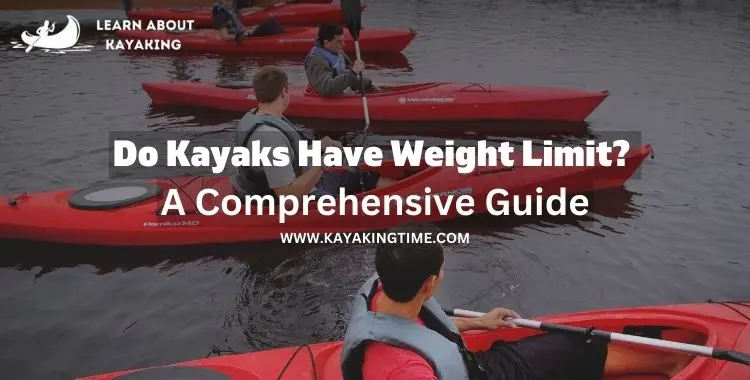How Long Does it Take to Kayak a Mile? Time Insights And Techniques
Looking for an adventurous way to explore the outdoors? Kayaking may be just the ticket! Whether you’re a seasoned paddler or a curious beginner, you might be wondering, “How long does it take to kayak a mile?”
Well, the answer isn’t quite as simple as you might think.
In this article, we’ll explore the various factors that can impact your kayaking speed and help you estimate how long it might take to paddle your way through a mile of water.
So grab your paddle, and let’s dive in!
How Long Does it Take to Kayak a Mile?
So, you must be eager to know how long it takes to kayak a mile. On average, a mile of kayaking takes roughly 30 minutes if the water is calm and flat. Also, it depends on the amount of paddling experience you have, the weather conditions, and the type of kayak you’re paddling on how quickly you can swim a mile.
I paddled a mile back, but how long did it truly take me? How much time will it take YOU to paddle a mile or even better? This post will examine each factor that affects your kayaking speed.
How Fast Can You Paddle a Kayak?
Everyone is curious to know how fast can they paddle a kayak. well, it all depends on how quickly YOU can paddle a kayak.
As per my knowledge and expertise, beginner kayakers can paddle at 2 to 2.5 knots in calm waters while using a kayak that is an average of 15 feet long and approximately 24 inches broad.
While on the other hand, Kayakers with more experience can paddle at 3 knots. As a result, it will take us all between 20 and 30 minutes to paddle a mile.
To be able to paddle a mile in a kayak in 30 minutes, though, still seems like a lot of specifics. So what are some of the actual circumstances that have an impact on how quickly a kayak can go?
Let’s take a look at the different factors that affect kayak speed, and then we can see how they might affect your kayaking experience.

1- Water Conditions
Do you go paddling on calm lakes, raging rivers, or the open ocean? Your paddling speed might be impacted by 1 to 2 miles per hour depending on the weather, the currents, obstructions, and the conditions of the water.
Have you ever attempted an uphill bike ride without brakes? Well, that’s pretty much how it feels to paddle against a strong current:
- Paddling Downstream
If you add fast-moving currents into the mix, paddling downstream will help you acquire momentum, you’ll be able to paddle quicker, and you’ll be able to paddle farther per hour.
The same goes for calm and flat waters. Although it won’t increase your speed, it will make paddling much simpler because you won’t have to fight the water.
- Watch Out For Obstructions
A few obstructions, like overhanging trees, floating debris, and other kayakers, may need to be avoided, which could slow down your average kayak speed.
Water conditions can have a significant impact on your kayak’s speed. For example, paddling against the current or into the wind will slow you down, while paddling with the current or wind behind you can speed you up.
Waves and choppy water can also slow you down, as they require more energy to paddle through. So you should know how to kayak in these circumstances.
2- Type of a Kayak
The design of your kayak can have a significant impact on its speed and maneuverability. Longer, narrower kayaks are generally faster, as they have less surface area to drag through the water.
However, they can also be less stable, which can make them more challenging to handle for inexperienced paddlers. Shorter, wider kayaks are more stable, but they are also slower and more difficult to maneuver.
So Which Kayak Will be Faster?
Assuming all other circumstances and factors are equal. A narrow-beamed and longer kayak will naturally be faster than a wide-beamed and shorter one because of its design.
Racing, touring, and sea kayaks, as well as sit-inside versions in general, are better suited for speed than recreational SOTs and fishing kayaks when it comes to the various types of kayaks.
3- Type of Paddle
The paddle makes a difference in kayaking speed and overall enjoyment, despite how frequently newbies miss it.
A kayak paddle should be appropriate for your height, shoulder width, and kayak width. Additionally, you need to consider your objective, speeding up your paddling per mile.
Don’t worry. You have two choices for kayak paddles here:
- High-angle paddles
High-angle paddles enable more forceful strokes and quicker propulsion since they are made to catch and hold water. These shorter, wider paddles work best with smaller, faster boats.
- Long-angle paddles
Long-angle paddles with low angles are made to cut through the water more efficiently and cause less fatigue. They are most effective when used with wider, leisurely paddling boats.
Want to know more about Paddles? Read our detailed guide here.
4- Weather Conditions
Wind can be a paddler’s best friend or worst enemy regarding how long it takes to paddle a mile in a kayak. It all comes down to how strong and which way the air currents are moving.
Even though kayaks lack sails, they can still catch the wind.
For instance, no matter how hard you paddle, you won’t generate much speed if you’re floating downstream while facing head-on wind gusts.
However, if the winds work in your favor and blow in the direction you’re going, kayaking a mile may take less time than usual.
Wind-induced speed increases seem alluring, don’t they?
Nevertheless, do not underestimate the effects of bad weather. It is preferable to call it a day or postpone your kayak trip if the weather begins to feel more like an approaching storm than a gentle breeze.
5- Physical Fitness
Your physical strength and endurance can significantly impact your kayaking speed. Paddling requires a lot of upper body strength and endurance, so being in good shape can help you maintain a faster pace for longer periods of time.
First-time or inexperienced paddlers cannot compete with more seasoned paddlers because they lack the kayaking muscles, endurance, and stroke efficiency.
6- Paddling Technique
Using proper paddling techniques is essential for both speed and efficiency. This involves maintaining a steady rhythm, using your core muscles to power your strokes, and keeping your paddle close to the kayak to minimize drag.
Meanwhile, poor technique can cause your kayak to slow down and make it more difficult to maintain a consistent speed.
7- Experience Level
Experienced kayakers tend to be more efficient and effective in their paddling technique, which can lead to faster speeds.
Inexperienced paddlers may struggle with maintaining a consistent rhythm, using proper technique, or navigating tricky water conditions, which can slow them down. In addition to technique, experienced kayakers tend to be better at reading the water and navigating difficult conditions.
They can anticipate changes in current or wind direction and adjust their paddling accordingly, which can help them maintain their speed and avoid getting pushed off course.
Final Words
Although the question “how long does it take to kayak a mile” may seem straightforward, the answer is complex and differs from paddler to paddler.
The only effective approach to address it is with some rough estimates that the average paddler should be able to complete a mile of paddling in 20 to 30 minutes under ideal circumstances.
I repeat that it relies on the paddler’s skill and stamina, the condition of the water and the weather, and the kayak’s design, among other factors.
Yes, you could begin paddling at a speed of around 2 miles per hour as a beginner. However, as you develop and refine your technique, you may discover that you can kayak faster and that it takes you less time to cover any distance.
FAQs – how Long does it take to kayak a mile
q. Is it Hard to Kayak a Mile?
Kayaking a mile can be relatively easy or challenging depending on several factors, including your level of experience and the water conditions. With proper technique and appropriate equipment, kayaking a mile on calm and flat water can be a leisurely and enjoyable activity.
q. How Long Does it Take to Kayak 5 Miles?
The time it takes to kayak 5 miles can vary greatly depending on several factors, such as the kayak type, paddling technique, water conditions, and physical fitness level. As a rough estimate, an average kayaker in a recreational kayak can paddle 5 miles in 1.5 to 2.5 hours on calm and flat water.
q. How Far Can You Kayak in an Hour?
On calm and flat water, an experienced kayaker in a touring kayak can cover a distance of 3 to 4 miles per hour. The speed in a recreational kayak or less ideal water conditions may be slower, and the distance covered in an hour may be less than 3 miles.
q. What is a Reasonable Distance to Kayak in a Day?
The distance that is reasonable to kayak in a day depends on several factors as I have mentioned above. But as a general guideline, an intermediate to experienced kayaker can comfortably cover a distance of 10 to 20 miles a day on calm and flat water.
q. I am a Beginner. How Long Does it Take Me to Kayak 5 to 10 Miles?
A beginner may cover a shorter distance of 5 to 10 miles easily. However, rough water, strong winds, and other environmental factors can slow you down, so adjusting your distance expectations is important. Additionally, for a beginner, I would suggest that start with shorter distances and gradually build up your endurance before attempting longer trips.







One Comment